
Kód: 36958964
Innovative Data Integration and Conceptual Space Modeling for COVID, Cancer, and Cardiac Care
Autor Amy Neustein, Nathaniel Christen
The COVID-19 pandemic has inspired an unprecedented convergence of scientific research, driven in part by publishers choosing to allow open public access to many research papers and data sets relevant to COVID-19 (the disease) and ... celý popis
- Jazyk:
 Angličtina
Angličtina - Vazba: Brožovaná
- Počet stran: 286
Nakladatelství: Elsevier Books, 2022
- Více informací o knize

Mohlo by se vám také líbit
Dárkový poukaz: Radost zaručena
- Darujte poukaz v libovolné hodnotě a my se postaráme o zbytek.
- Poukaz se vztahuje na celou naši nabídku.
- Elektronický poukaz vytisknete z e-mailu a můžete ihned darovat.
- Platnost poukazu je 12 měsíců od data vystavení.
Více informací o knize Innovative Data Integration and Conceptual Space Modeling for COVID, Cancer, and Cardiac Care
Nákupem získáte 559 bodů
 Anotace knihy
Anotace knihy
The COVID-19 pandemic has inspired an unprecedented convergence of scientific research, driven in part by publishers choosing to allow open public access to many research papers and data sets relevant to COVID-19 (the disease) and SARS-CoV-2 (the viral agent). The sheer volume of this data presents both a practical challenge — how should scientists find the information most relevant to them — and a valuable case-study in the difficulties present in the curation of multi-disciplinary information spaces, unified around a common scientific theme: in this case, determining how best to approach COVID-19 and to mitigate the global SARSCoV-2 pandemic. In this context, Innovative Data Integration and Conceptual Space Modeling for COVID, Cancer, and Cardiac Care provides a critical and analytic overview of the COVID-19 data ecosystem: the different genres of data which are marshaled toward scientific investigation of COVID-19 and SARS-CoV-2; how this data is obtained, consumed, analyzed, and interpreted; how research data supports scientific claims pertaining to COVID-19’s biological and epidemiological mechanisms and trajectory; and how these scientific claims should translate into public policy. The authors examine the operational logistics of COVID-19 data: its structures, protocols, analytic methodology, and empirical significance. Readers will learn to identify the distinct scientific disciplines, each of which is aimed at one particular facet of COVID-19 research — molecular biology, genomics, radiology, epidemiology, clinical informatics, and their various subfields — and, for each of these disciplines, review their distinct paradigms for data acquisition, analysis, and modeling. The point of these expositions is to bring the reader from conceiving “data as something abstract and amorphous, to understanding data as the buildingblocks of scientific research and biomedical claims. One way to supply this backstory is to examine COVID19 data from the viewpoint of software engineering: to demonstrate the methodology for data acquisition and management from the perspective of programmers implementing software which manipulates COVID-19 data. This explication examines the data structures, file formats, API protocols, and other technical details intrinsic to writing code that works with COVID-19 data as a digital artifact. The primary goal of these discussions is to help scientists (who may be well-versed in data structures relevant to their specialization but less so vis-àvis other disciplines), as well as policy makers, to better understand the technical chains which transform COVID-19 information from the realm of laboratories and experiments to the realm of public policy and public health. Aside from the empirical focus geared toward scientists and policy makers, Cross-Disciplinary Data Integration and Conceptual Space Models for COVID-19 also provides a more theoretical and IT-focused case-study in data curation and integration. From this perspective, the COVID-19 data ecosystem is a concrete example through which theories of cross-disciplinary data integration are presented. There are two distinct phenomena which render inter-disciplinary data integration significant for COVID-19 in particular, and clinical/biomedical practices in general. First, certain forms of analysis explicitly combine information or statistical parameters from distinct subject areas. For example, in addition to epidemiological models of SARSCov-2 within an entire population, it is important to study the present or projected spread of the disease among different social groups, identified by age, gender, race, economic status, and so forth. This form of analysis therefore merges epidemiological and sociodemographic data and methods. As such, this is an example of analyses wherein it is explicitly necessary to pool data that is typically represented via different schemas — and accessed via different protocols — into a single algorithmic or computational environment. This book therefore examines cross-disciplinary analysis along these lines as case studies of data integration on a procedural level: how computer code can obtain and marshal heterogeneous data into a common form suitable for qualitative and quantitative analyses.The second context where multi-disciplinary integration becomes relevant operates at a higher level: the development of heterogeneous information spaces which can absorb data from many environments, evincing a variety of disciplinary orientations. The rationale for such heterogeneous repositories is often practical and logistical: institutions have operational reasons for curating a single, comprehensive data ecosystem that is shared by multiple information producers and consumers, such as a “Semantic Data Lake. In these situations, one large central repository will take the place of numerous narrower, domain-specific databases. A central repository may be subdivided into smaller components implementing narrower protocols — e.g., a clinical software network may provide diagnostic images via a PACS (Picture Archiving and Communication System) service, and treatment/outcome data via an EMR (Electronic Medical Record) architecture. It is understood that the structure and use of data in these two environments (PACS and EMR) is very different. Nevertheless, institutions will often unify these systems into a single data platform for logistical reasons: it is more convenient for doctors and researchers to have a single access point, a single login account, a single query framework, etc., which accesses the totality of information used across the organization’s activities. These institutional repositories present challenges which are different from granular syntheses of heterogeneous data into a single procedural/algorithmic context. Disparate data structures in a heterogeneous archive, such as a “Data Lake, may never be directly combined in a single computation. Nevertheless, Data Lakes and their kin seek to provide a single software, query, and accession infrastructure which can presumably accommodate a diversity of data models, and this diversity certainly presents technological challenges. And in fact, COVID-19 demonstrates the problems engendered by these complexities in a tangible way, insofar as health and governmental officials have criticized the lack of integrated data across disciplinary and jurisdictional boundaries — poor coordination between city, state, and federal governments in the US, for example, as well as between medical and governmental institutions. COVID-19 therefore offers a case-study in the challenges of implementing large-scale heterogeneous data repositories, and in response the authors proffer both theoretical analyses and practical recommendations which could improve such data-archiving technology in the future. Cross-Disciplinary Data Integration and Conceptual Space Models for COVID-19 accordingly is organized in a format which progresses from domain-specific to integrative styles of analysis: the first part provides readers with data models and protocols within individual disciplines, while the second part provides crossdisciplinary integration at both a theoretical and practical level. The third part then delves deeper into integrative paradigms in several areas, particularly text mining and software development. Cross-Disciplinary Data Integration and Conceptual Space Models for COVID-19 examines COVID-19 research on two levels: one that is empirically focused, and one that is more theoretical. As such, the book is of interest on an empirical level to scientists and policy makers who can benefit from a broad overview of COVID-19 research, one which uses empirical case-studies to illustrate how COVID-19 data is accessed and analyzed within the disparate disciplines that collectively contribute to our knowledge about the disease. On a more theoretical level, the book provides computer scientists and software engineers with new theoretical models and type systems with which to investigate data-integration problems. The new theories and methods explicated in this book have practical applications to fields such as database implementation and Software Language Engineering. Such applications are documented via the supporting code available within publicly accessible data sets, helping to further the goals of the Research Object Protocol. Provides data models and protocols for a variety of disciplines for data analysis in COVID-19 research Integrates provides a critical and analytic overview of the COVID-19 data ecosystem: the different genres of data which are marshaled toward scientific investigation of COVID-19 and SARS-CoV-2; how this data is obtained, consumed, analyzed, and interpreted; how research data supports scientific claims pertaining to COVID-19’s biological and epidemiological mechanisms and trajectory; and how these scientific claims should translate into public policy Provides a unique three-part approach: the first part provides readers with data models and protocols within individual disciplines, while the second part provides cross-disciplinary integration at both a theoretical and practical level; the third part then delves deeper into integrative paradigms in several areas, particularly text mining and software development
 Parametry knihy
Parametry knihy
Zařazení knihy Knihy v angličtině Medicine Nursing & ancillary services Biomedical engineering
5593 Kč
- Plný název: Innovative Data Integration and Conceptual Space Modeling for COVID, Cancer, and Cardiac Care
- Autor: Amy Neustein, Nathaniel Christen
- Jazyk:
 Angličtina
Angličtina - Vazba: Brožovaná
- Počet stran: 286
- EAN: 9780323851978
- ID: 36958964
- Nakladatelství: Elsevier Books
- Hmotnost: 558 g
- Rozměry: 237 × 372 × 25 mm
- Datum vydání: 24. January 2022
Oblíbené z jiného soudku
-

The Death of Death
586 Kč -

Safety Risk Management for Medical Devices
3613 Kč -

Ultimate BMAT Guide - 600 Practice Questions
908 Kč -

Corneal Biomechanics and Refractive Surgery
1681 Kč -
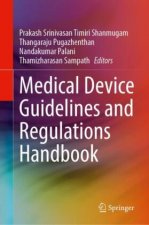
Medical Device Guidelines and Regulations Handbook
4267 Kč -
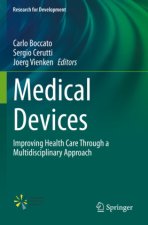
Medical Devices
3089 Kč -

Introduction to Biomaterials
2311 Kč -

Biodesign
2565 Kč -

Comparative Kinesiology of the Human Body
4546 Kč -

Biomedical Microsystems
4267 Kč -

Wearable Robotics
6572 Kč -

Analog Electronics for Radiation Detection
2770 Kč -

Biomedical Engineering
2109 Kč -

Cell Culture Technology
1973 Kč -

Organ Tissue Engineering
15128 Kč -

Introduction to Biomedical Engineering
4003 Kč -

Electromagnetic Imaging for a Novel Generation of Medical Devices
4870 Kč -

Handbook of Biomechatronics
4596 Kč -

Science and Principles of Biodegradable and Bioresorbable Medical Polymers
8692 Kč -

Novel Biomaterials for Regenerative Medicine
6569 Kč -

Introduction to Clinical Engineering
2691 Kč -
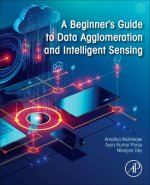
Beginner's Guide to Data Agglomeration and Intelligent Sensing
4532 Kč -
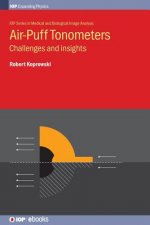
Air-Puff Tonometers
4840 Kč -
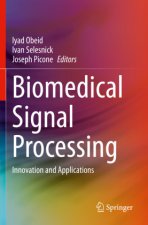
Biomedical Signal Processing
3907 Kč -

Handbook of Low-Level Laser Therapy
12836 Kč -
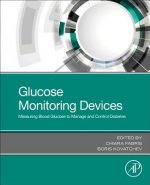
Glucose Monitoring Devices
4288 Kč -

Recent Developments and Achievements in Biocybernetics and Biomedical Engineering
5094 Kč -

Building Tissues
4568 Kč -

Clinical Kinesiology and Biomechanics
2810 Kč -

Nanotechnology in Biology and Medicine
6712 Kč -

Atomic Force Microscopy in Molecular and Cell Biology
2866 Kč -

Clinical Engineering Handbook
6572 Kč -

Medical Device Design
4215 Kč -

Safety Risk Management for Medical Devices
4940 Kč -

Artificial Intelligence in Dentistry
5391 Kč -

Brain Seizure Detection and Classification Using EEG Signals
5593 Kč -

Hydrogels for Wound Healing
9014 Kč -

Medical Devices and In Vitro Diagnostics
10840 Kč -

Gellan Gum as a Biomedical Polymer
4014 Kč -

Computational Nanomedicine and Nanotechnology
2810 Kč -

Polyurea
6450 Kč -

Synthetic Polymers in Drug and Biotherapeutics Delivery
5501 Kč -

Advances in Artificial Intelligence
6204 Kč -

Biomedical Engineering Handbook
16280 Kč -

Introduction to Instrumentation and Measurements
6077 Kč -

Neural Network Modeling and Identification of Dynamical Systems
4940 Kč -
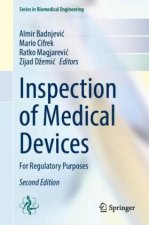
Inspection of Medical Devices
3907 Kč -

Artificial Intelligence-Based Brain-Computer Interface
5919 Kč -
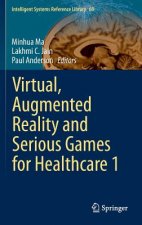
Virtual, Augmented Reality and Serious Games for Healthcare 1
6578 Kč
Osobní odběr Praha, Brno a 12903 dalších
Copyright ©2008-24 nejlevnejsi-knihy.cz Všechna práva vyhrazenaSoukromíCookies





 Vrácení do měsíce
Vrácení do měsíce 571 999 099 (8-15.30h)
571 999 099 (8-15.30h)